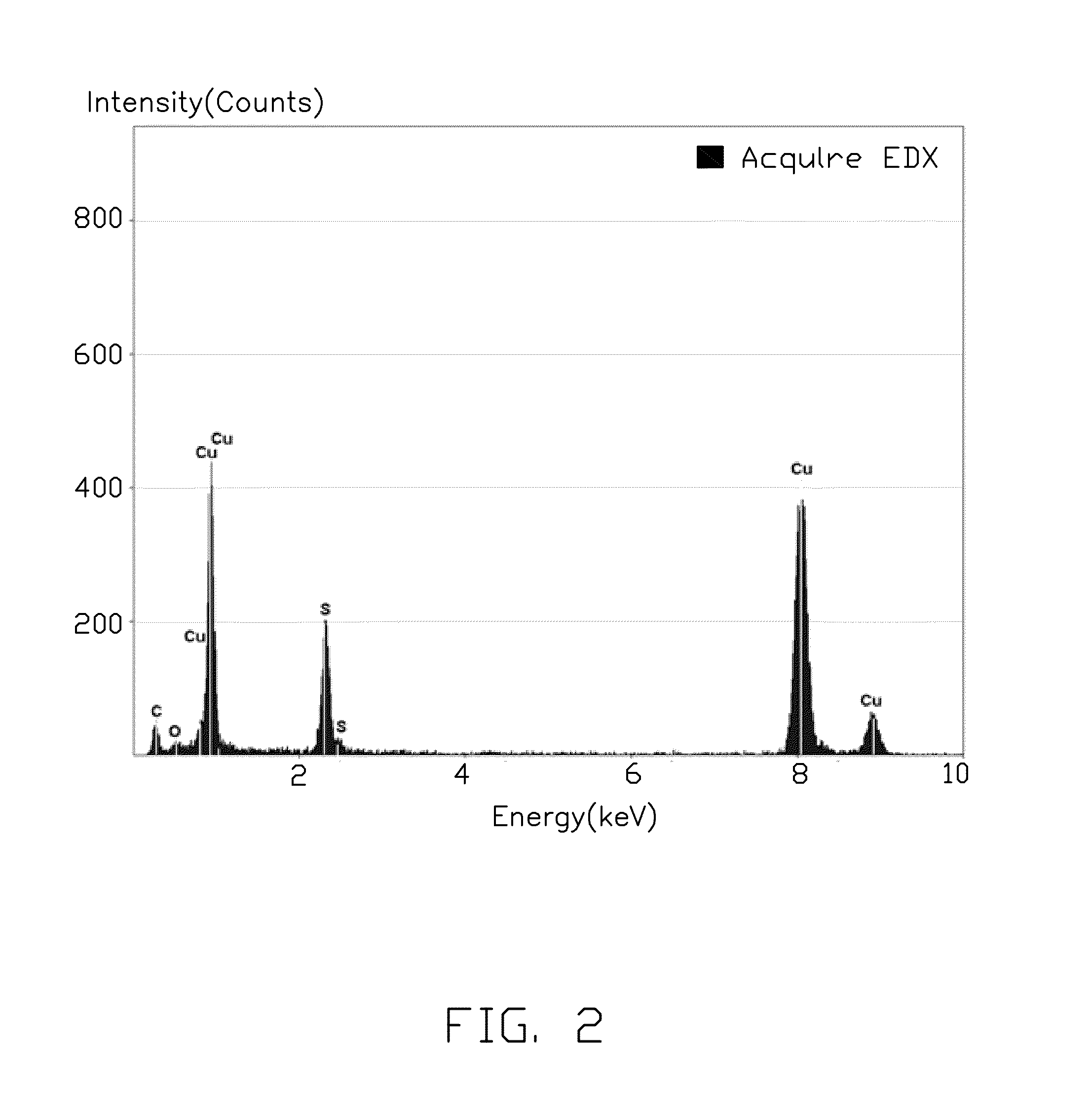Method for making sulfur-graphene composite material
- Summary
- Abstract
- Description
- Claims
- Application Information
AI Technical Summary
Benefits of technology
Problems solved by technology
Method used
Image
Examples
example 1
[0055]In Example 1, brown powder of graphite oxides is ultrasonically agitated in water to form dark brown powder of graphene oxides stably dispersed in the water, which is used as the dispersed solution. The power for the ultrasonically agitation is about 100 W. The size of the formed graphene oxides is about 10 microns to about 100 microns. The graphene oxides can be stood in the water for 24 hours without precipitation. The weight percentage of the graphene oxides is about 0.5% in the water. About 0.90741 g sodium thiosulfate is added in 100 ml dispersed solution, to form a mixture. The mixture is stirred and 6 ml hydrochloric acid with a weight concentration of 0.5% is slowly added to the mixture. White-grey floccules can be seen in the mixture, which is the elemental sulfur. The white-grey floccule is centrifugalized from the water and washed by deionized water twice, and dried at about 60° C., to achieve the sulfur-graphene composite material. Referring to FIG. 2, the sulfur-g...
example 2
[0057]The dispersed solution is formed by the same method in Example 1. The weight concentration of the graphene oxide is about 0.5%. About 0.7 g sodium sulfide is added in about 100 ml dispersed solution to form a mixture. SO2 gas is continuously introduced in the mixture until the redox reaction is complete. The white-grey floccule is filtered and washed by deionized water twice, and dried at about 60° C., to achieve the sulfur-graphene composite material.
[0058]Depending on the embodiment, certain steps of methods described may be removed, others may be added, and the sequence of steps may be altered. It is also to be understood that the description and the claims drawn to a method may include some indication in reference to certain steps. However, the indication used is only to be viewed for identification purposes and not as a suggestion as to an order for the steps.
PUM
 Login to View More
Login to View More Abstract
Description
Claims
Application Information
 Login to View More
Login to View More - R&D
- Intellectual Property
- Life Sciences
- Materials
- Tech Scout
- Unparalleled Data Quality
- Higher Quality Content
- 60% Fewer Hallucinations
Browse by: Latest US Patents, China's latest patents, Technical Efficacy Thesaurus, Application Domain, Technology Topic, Popular Technical Reports.
© 2025 PatSnap. All rights reserved.Legal|Privacy policy|Modern Slavery Act Transparency Statement|Sitemap|About US| Contact US: help@patsnap.com



